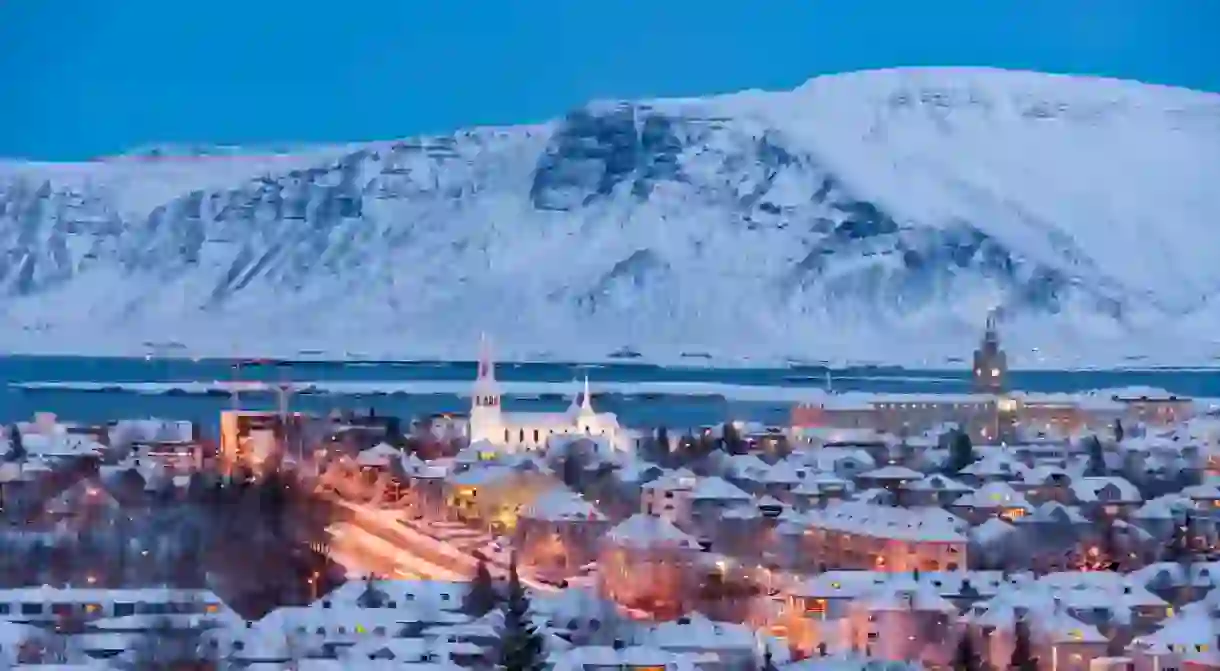The Most Beautiful Places in Iceland

It’s rare for your preconceptions about a foreign country to be proved right once you get there. However, Iceland – the island pearl of Europe – is just as beautiful and desolate as you think it is, if not more so.
The population of Iceland is so small that they have an app to make sure they don’t accidentally date a relative. Add in the fact that most Icelanders live in the capital of Reykjavik, and you know that you’ll have acres upon acres of untouched wilderness to explore. These spots should be at the top of your bucket list when you’re inevitably tempted into a visit.
Svínafellsjökull Glacier
Natural Feature

Svínafellsjökull is an outlet glacier on the southwestern edge of the enormous Vatnajökull ice cap. It’s easily reachable by car, found just off of a ring road in southern Iceland. However, despite that ease of access, it’s a landscape that seems uncharted, as blue-white ridges stretch all the way to the horizon. It’s so fragile yet alien-looking that it featured in Christopher Nolan’s 2014 sci-fi blockbuster Interstellar, standing in for an uncharted planet. It was a very believable backdrop.
Grótta
Natural Feature

Grótta is only an island half the time. At high tide, the thin isthmus that connects it to the mainland is completely submerged, so pick the timing of your visit wisely. The island itself is a bird sanctuary, with the only major landmark being the lighthouse on the northern coast. That’s in spite of it being only a nine-minute drive from Reykjavik. So, if you want to quickly escape the urban and bask in birdsong, this is the place.
Snæfellsjökull Glacier
Natural Feature, Park

Snæfellsjökull is a 700,000-year-old peak with a glacial summit, perched in extremis on the Icelandic west coast. Technically, it’s still an active volcano, with the last eruption estimated as being between 50 and 350 CE. Fortunately, since then, it’s become world-renowned not for any destructive disaster, but for shaping pop-culture. Snæfellsjökull was immortalised in Jules Verne’s sci-fi classic Journey to the Centre of the Earth, where it’s the starting point of the eponymous trip.
Þórsmörk Valley
Natural Feature

Þórsmörk valley is a nature reserve and popular hiking route in the southern part of the Highlands. The valley is surrounded by three glaciers: Eyjafjallajökull, Mýrdalsjökull and Tindfjallajökull. The variety of landscapes and the scale of the mist sometimes here make the place feel supernatural, cut straight from a feature film. When the fog clears, you can see glacial rivers cutting through the black sand, as well as rich flora and fauna. Multiple hiking trails will take you crisscrossing through this astonishing landscape.
Rauðasandur
Natural Feature

Rauðasandur is the closest Iceland gets to transporting you into Dune. It’s a beach that extends flat as far as the eye can see, found in the Westfjörds. The red sand here is a rarity, standing out from the black beaches common in Iceland. It takes that colour from pulverised scallop shells, accumulated over centuries; the contrast with the black cliffs and blue ocean beyond is simply gorgeous. On a clear day, you can also see Snæfellsjökull on the other side the bay.
Jökulsárlon Beach
Natural Feature

One visit to Jökulsárlon Beach and you’ll understand why it’s nicknamed the Diamond Beach. The black sands here are strewn with crystals of ice that have washed up from the sea. The landscape is especially beautiful if you visit at either sunrise or sunset, where the whites and blacks of the ground contrast wildly with the orange in the sky. On top of that, as the ice crystals are constantly melting only to be replaced by new ones from the waves, your every visit will be slightly different.
Reynisfjara Beach
Natural Feature

At Reynisfjara Beach, 66m (217ft) towers made of basalt jut high into the air from black sand. According to Icelandic folklore, these tall rocks were once trolls tasked with hauling boats to the mainland, only to be frozen in stone when the sun rose. No matter how much stock you put in that myth, the serenity here can’t be denied. Make sure you also visit the nearby fishing village Vík í Mýrdal: a small base nestled comfortably between ocean waves and tall peaks.
Hraunfossar
Natural Feature

Hraunfossar is a series of waterfalls in West Iceland, just off of Road 518, that has been protected by nature conservancies since 1987. The falls are formed of rivulets that run for 900m (2,950ft) out of the Hallmundarhraun lava field. They cascade into the Hvítá river, where waters can vary from turquoise to stunning purples. Thanks to the thin and weaving shape it has, the river itself is also a popular spot for white-water rafting.
Víti Lake
Natural Feature

Just north of Lake Askja in the Central Highlands is Víti Crater, where you’ll find a geothermal pool with a striking opaque blue colour. The water is rich in sulphur and minerals, and the fact that it can reach temperatures of 25C (77F) makes it a shoo-in if you want to do some outdoor swimming in the Icelandic wilds. Be warned, though, that there aren’t any lifeguards or safety measures, so, if something goes wrong, you’re on your own.
Stakkholtsgjá Canyon
Natural Feature

Stakkholtsgjá Canyon, 100m (328ft) deep and 2km (1.2mi) long, is found near the entrance to Þórsmörk valley. It’s a narrow riverbed – with sleek, moss-covered rocks pressing on either side – that ends in an elegant waterfall. With hues of neon green to ash-yellow moss decorating the rock formations, you may just be overwhelmed by all the intense colours here.
Camille Buckley contributed additional reporting to this article.













